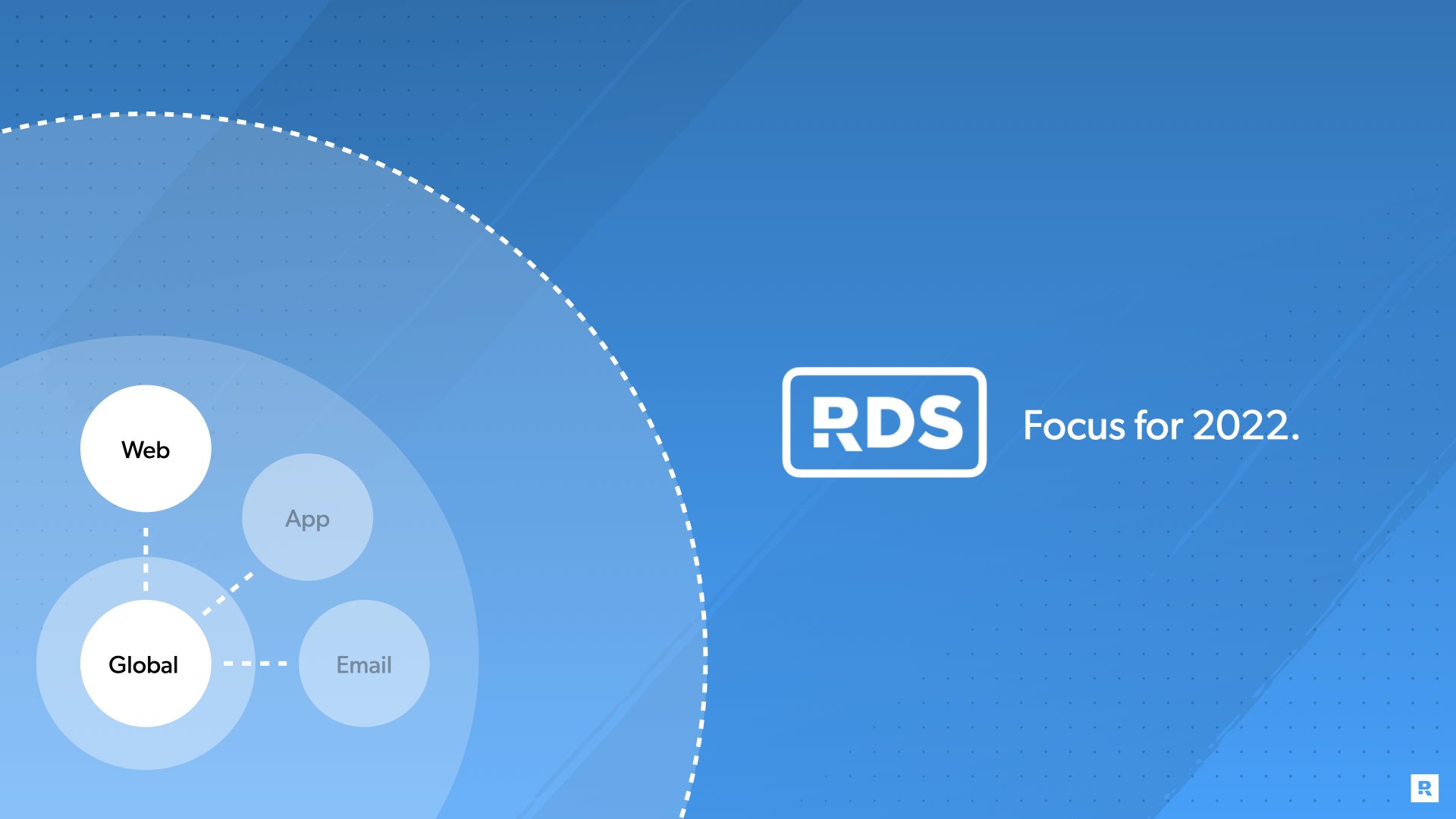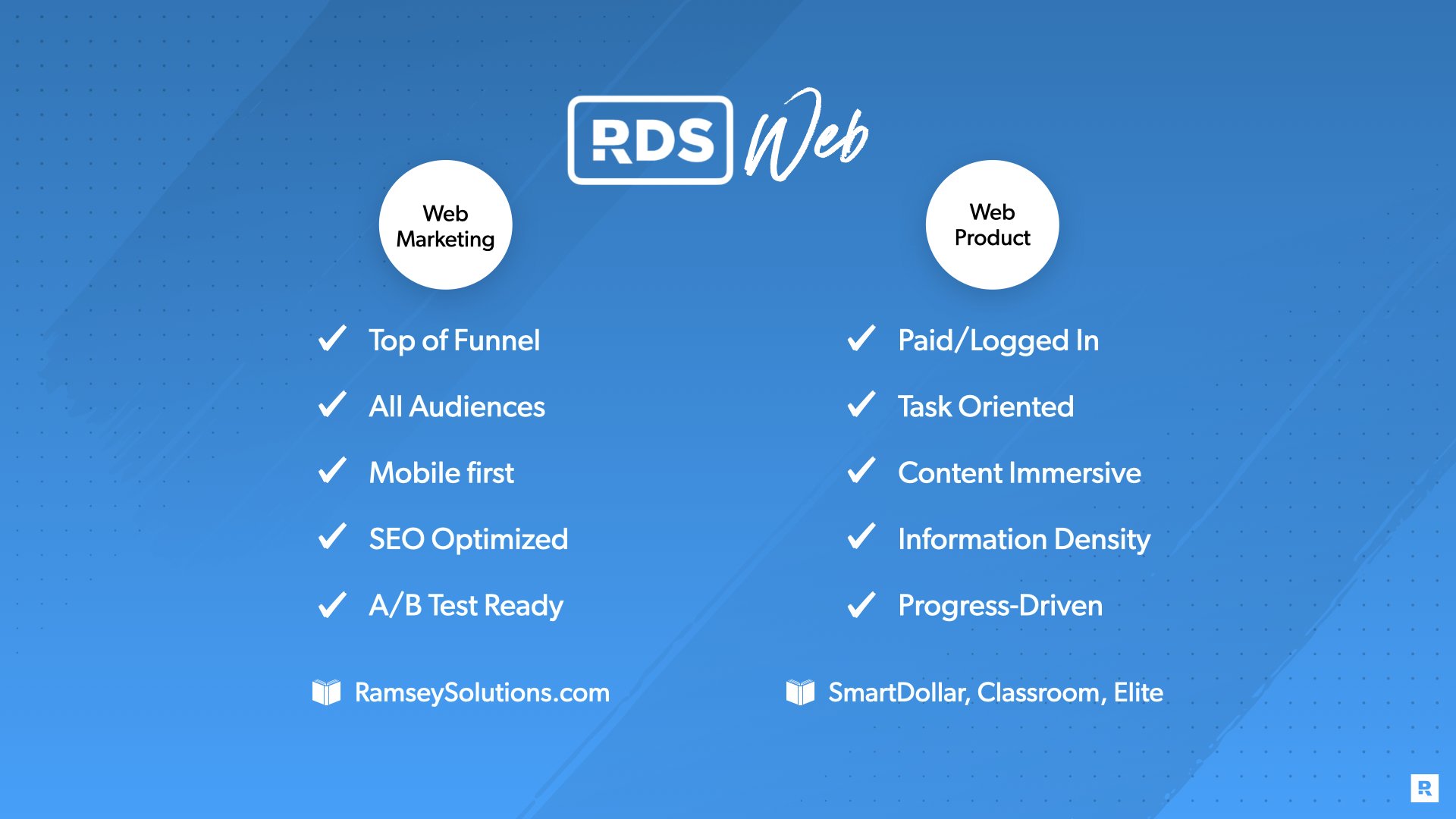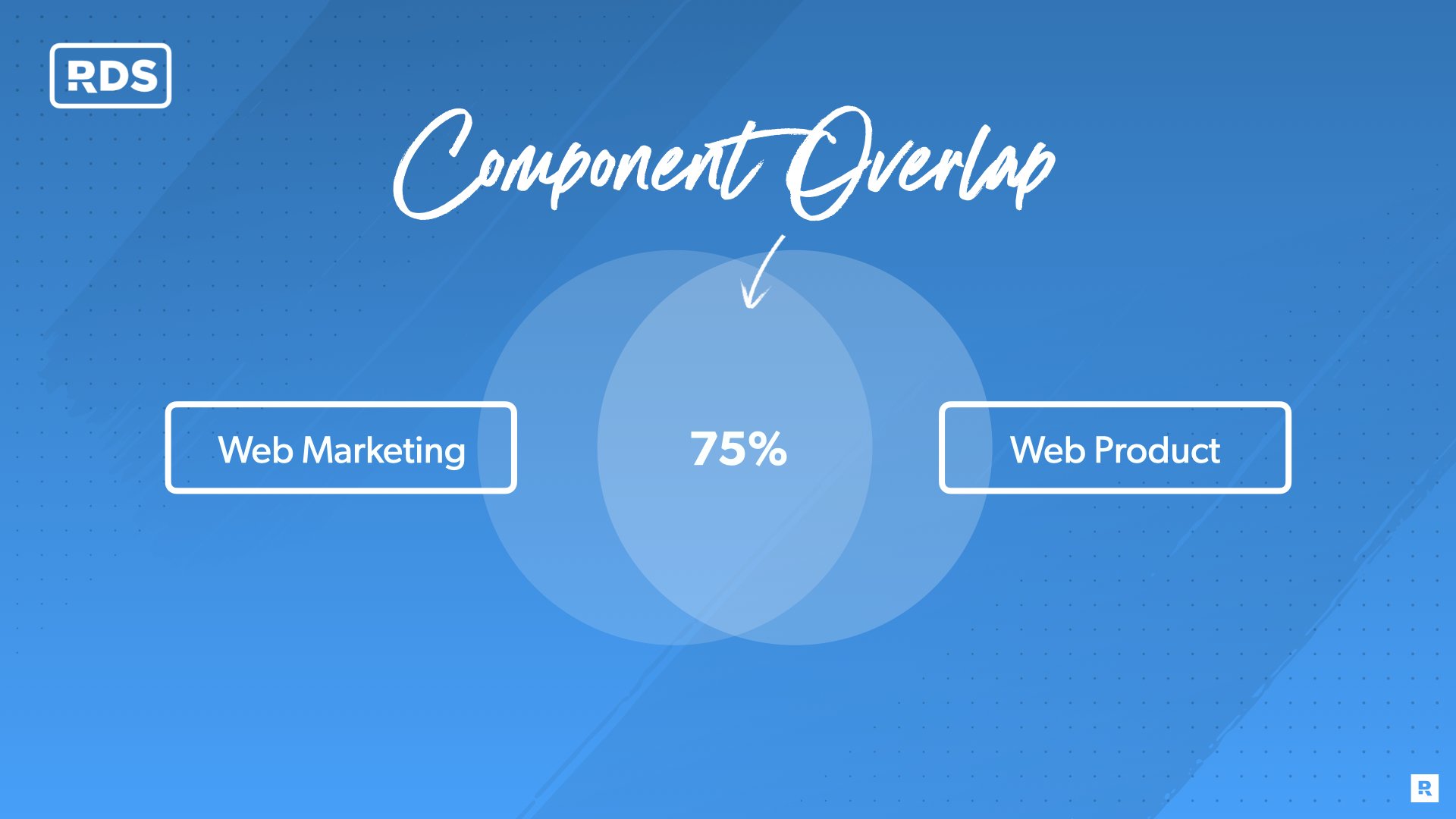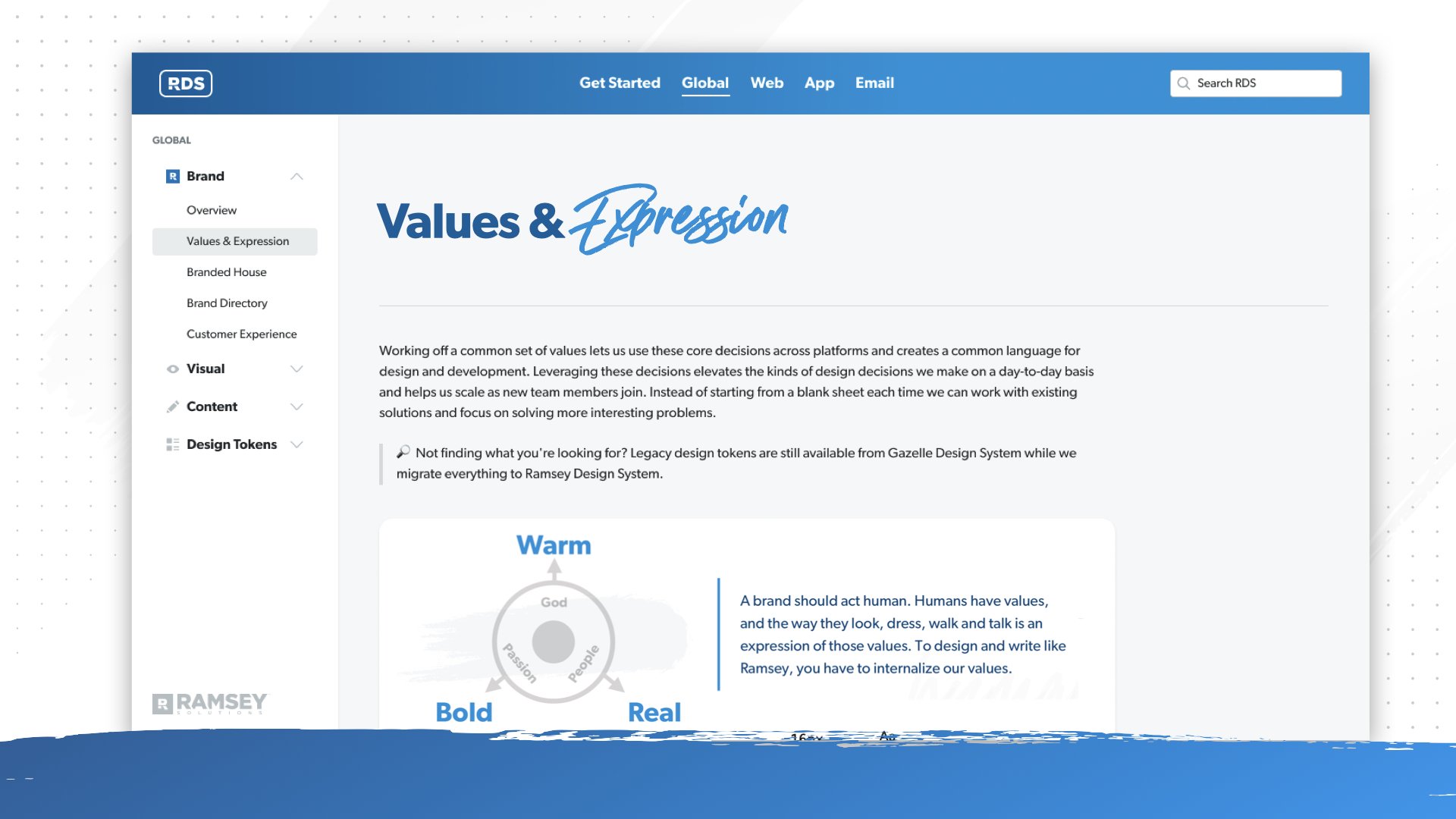Building the right design system
Ramsey Design System [RDS]
Activities
Developed strategy for building new design system
Partnered with engineering to create a roadmap
Communicated with entire organization monthly
Reported bi-weekly progress to C-suite
Led the team and was responsible for OKRs
Ran bi-weekly discovery sessions with our users
Advocated for adoption by building by cross-team relationships
My role
Design System Director
Global UX stakeholder for the company
Overview
The company’s former design system was adequate for a single website, but lacked flexibility for the outcome of merging all web properties from over 15 business units and 7 digital products (operating in brand autonomy) to come together on one platform. I knew we needed to start small, but impactful in order to build trust that there was ROI in dedicating resources to building the right size system that could expand with the organization. By focusing on two parts that built on each other, and planning ahead for what the system needed to become, the team could start lean, utilize existing domain knowledge, and refine components already completed by other teams to share globally.
Goal
Focus on the web side of the organization and prove through adoption of use that reusable components keep work across teams consistent, accessible and most importantly, increase the speed to market by 50% or more by reusing vs. building net new.
Finding a place to start…
Design Systems can be overwhelming. With so much to combine, convert, and pull together– it’s important to focus, but also paint the vision for the entire system we’d need to build over time. By starting with global styles (guidelines of how to build) and web components (a smaller subset that allowed departments to migrate faster), the team was able to jump in knowing they’d bring tons of value to support the “one platform” company vision.
Components across the web
With many of our digital products being on the web, we wanted to find what our web apps shared with our website, and what was unique about the user experiences.
Decouple in-house silos
Currently we had two different teams (web marketing and web product) building a lot of the same components (just slightly different). Many of our products were web-based, so the user remains on the web through conversion. Intent and actions change, but overall brand styles and UI choices should stay as consistent as possible. We were able to combine engineering efforts and reassign half the engineers to more complex product problems in the org.
Keeping it lean
We had a small team in order to keep global (shared) costs down, but also needed to ensure we could deliver value to a 1,000+ person org. I came up with a partner & contribution model that utilized senior-level designers and engineers as stakeholders of their area. We held bi-weekly roundtable meetings to get feedback, review work, and prioritize next discovery items. It tripled our team by only using a % of other teams’ resources, and kept us shipping relevant, upgraded components each few weeks.
Good documentation makes it scale
Adoption was at the forefront of getting 15 businesses on board with one system. We kept it simple, but made sure the documentation was immaculate and designers and engineers both had what they needed to use the system without training. By pairing clear use cases and rules, we kept things consistent across all the different brands and had clear brand guidelines alongside to ensure the brands worked together as one. We also kept a tag system to show momentum of which components were in beta so they could check them out and provide feedback. Once implemented, even intern engineers and designers on day 1 could jump in and create complete experiences in days, not weeks.
Additional screens
⚡️ Team credits:
Elizabeth Weeks (Design Lead), Adam Diestelkamp (Senior Product Designer), Jeremy McDuffie (Engineer Manager), Grant Whiting (Software Engineer), Daniel Burnside (Software Engineer), Chris Holder (Software Engineer), Jeffrey McFarland (Software Engineer)
In Conclusion
I fell in love with design systems over the 2+ years building this team. It combines my passions for efficiency and scaling processes and pairs it with great opportunities to build relationships with team members across the organization. The collaboration of work this team accomplished was unmatched by any other team in that building at the time because we broke down invisible barriers between teams and scaled operations to keep dedicated headcount low.










